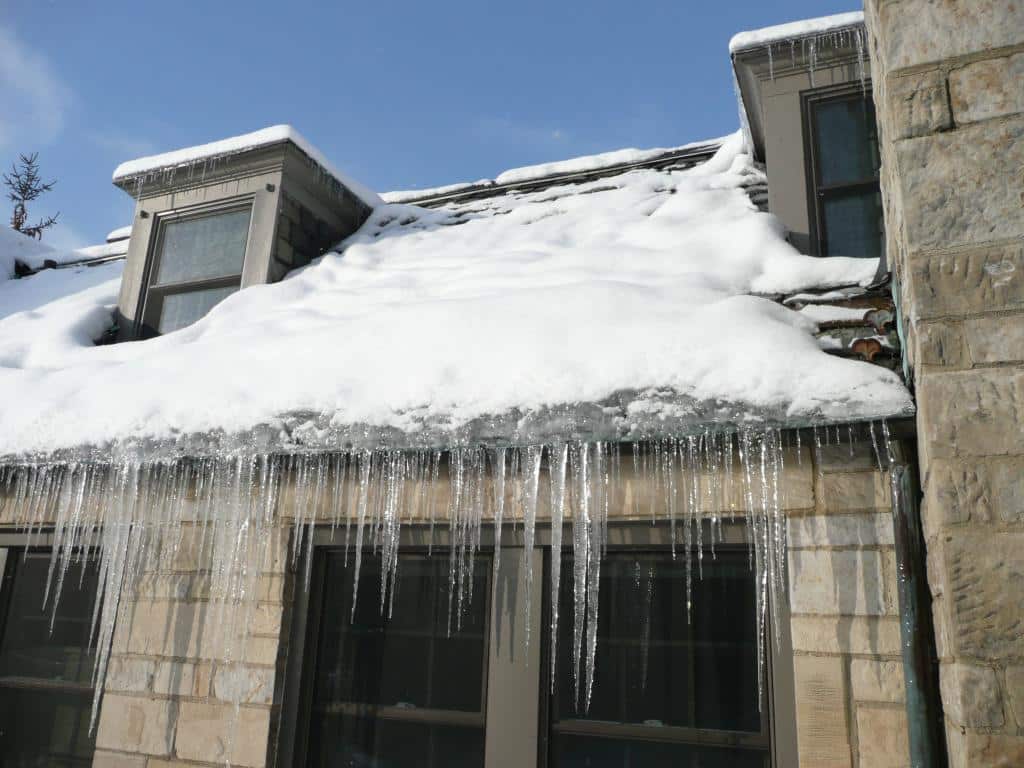Get Ready for Ice Dam Season
Heavy snows can cause more worries than just potential avalanches from composite roofing. Almost any roof has the potential for ice dams this winter if the proper precautions are not taken before the first snow falls.
Ice damming occurs when snow melts from heat loss in the attic. As a result, the water runs down the roof and then re-freezes on the of the edge of the roof (eave). This creates beautiful large icicles clinging to your gutters. They may be pretty to look at, but they stop water from properly draining off into the gutters and can be damaging to the gutters and your roof. A bad result of ice damning is that it can cause water to back up onto the roof and lead to a potential leak.

 According to This Old House magazine, there are eight different ways you can regulate the temperature of the roof so that it remains the same as the eaves to help reduce ice damming. These include ventilation, capping the hatch, adding insulation and insulating ducts.
According to This Old House magazine, there are eight different ways you can regulate the temperature of the roof so that it remains the same as the eaves to help reduce ice damming. These include ventilation, capping the hatch, adding insulation and insulating ducts.
To help reduce the chance of an ice dam forming on your luxury roof, take time now — before the cold weather hits — to make sure your attic is well insulated and vented. This will help keep the attic temperature closer to the outside temperature to reduce chances of ice dams. While DaVinci Roofscapes tiles are not waterproof, use of the proper peel and stick membrane on the bottom of the roof will also help make areas where ice damming occurs water-tight.
In areas with potential heavy/moderate snows, consider installing snow guards on your composite roof.
For more tips on ice dams, see Ice Dams, Snow Slides and Freezing Temperatures… Oh my!